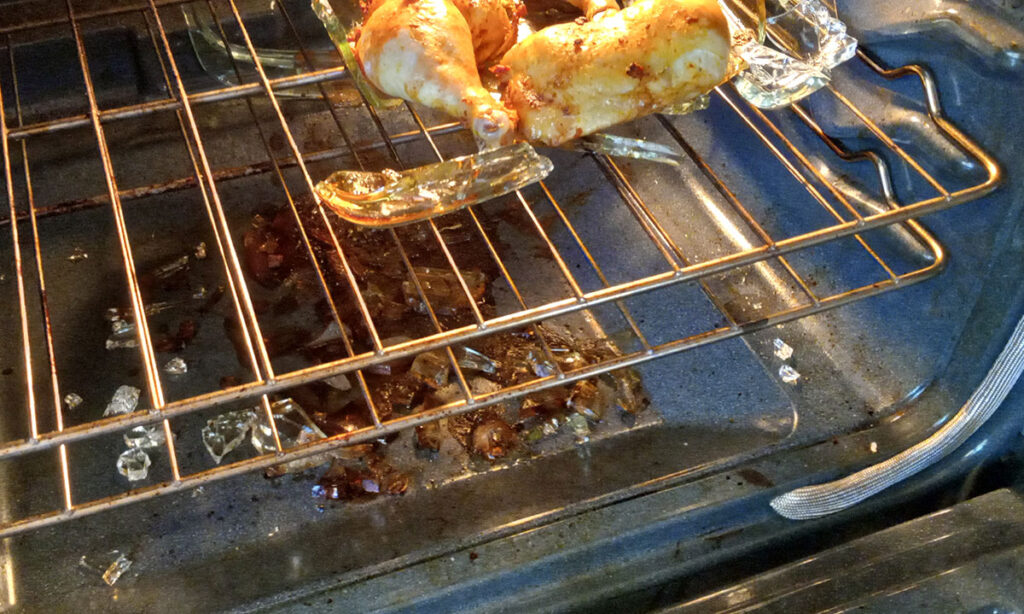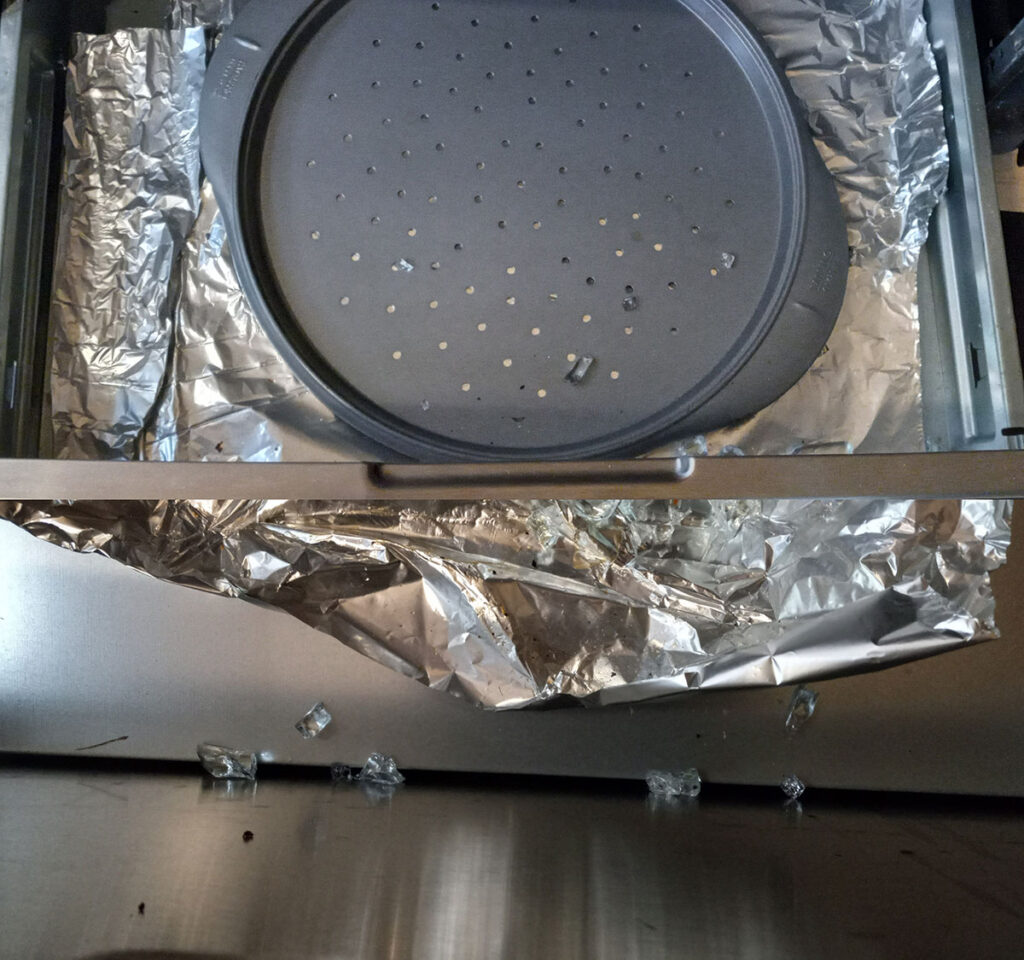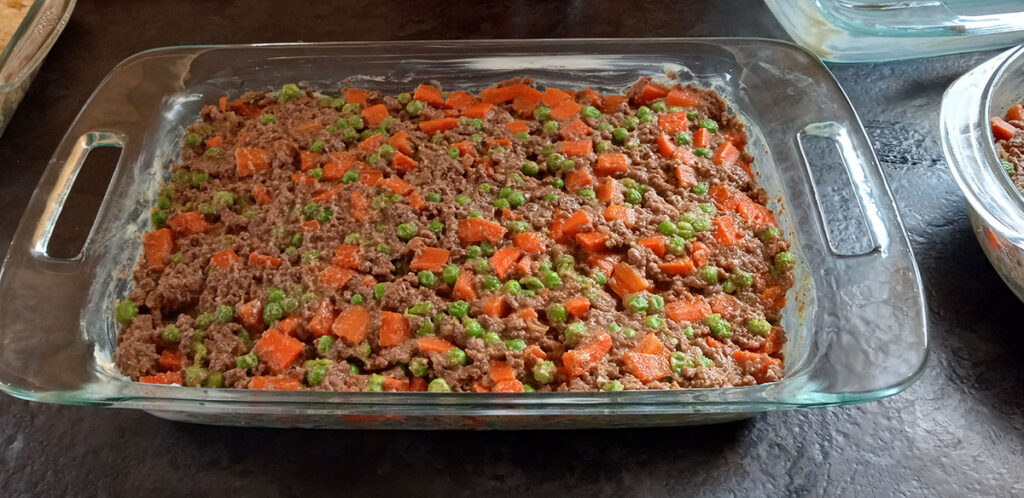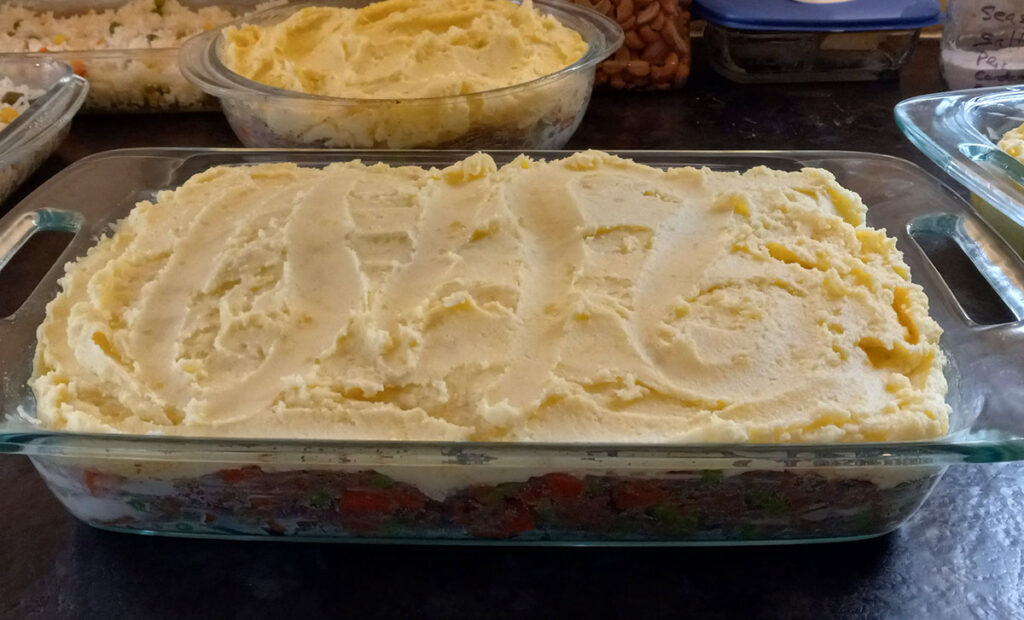The other day, I cooked a shattered meal—unintentionally, of course. It was supposed to be a delicious roasted dinner. Chicken, asparagus, and sweet potatoes were baking while I was writing.
Little did I know that my brand-new glass casserole dish would explode in my hands as I tried to lift it from the oven. It was not funny at all, and I left the horrible, awful mess to clean up after the oven had cooled.

You see, I like to plan dinner in the morning and pop it in the oven an hour or so before serving so that I can keep working right up until it is time for us to eat. It is like having a maid who has prepared a meal. Then all I have to do is stop writing, remove it from the oven, say dinner is ready, and we can sit down and enjoy.
But, dear readers, this has prompted me to tell you two things that I’ve learned, plus something I’m grateful for.
- Always have a cold supper you can make from a tin in emergencies.
- Pyrex or PYREX is not like our mothers’ PYREX!
- Thank goodness for cleaning rags, a vacuum, and a self-cleaning oven!
Now I must tell you about so-called oven-safe glass.
If you are like me, you have probably baked many a pie or casserole in a Pyrex glass baking dish. I even have one that was my mother’s, and though somewhat scratched, it has long performed perfectly without ever shattering. I regularly make several Shepherd’s Pie Casseroles and freeze them to bake without any concern or problem about shattering during baking. I’ve roasted chicken and all manner of things with no problems.



Don’t ask me how shards of broken glass ended up in the bottom drawer underneath the oven or all over the kitchen floor because it all happened so fast. As I had removed the dish with the baking asparagus in it first, it was fine. But the sweet potato had a couple of tiny shards of glass that I could see, so it went into the garbage along with the chicken. All I can say is that I am grateful to have been unharmed.
It seems that some years back, or maybe just recently, PYREX changed its type of glass. You may have already heard about this, but just in case, to avoid having the same thing happen to you, here’s the scoop. And it is not just PYREX but other brands as well. So now, before buying a glass baking dish, check what kind of glass it has been made with.
“A tempered Duralex glass ‘shattered’ in my hands as I was rinsing it out one morning. Other than being completely surprised (and a little annoyed about having to clean tiny bits of glass out of my sink), I was unhurt, not even a scratch.”
Lesley Stockton, Wirecutter senior staff writer of the New York Times
Lesley’s experience was not exactly the same as mine. My casserole dish exploded in my hands on contact as I tried to remove it from the oven. Fortunately, I was using long silicone oven mitts. But the explosion gave me quite a shock. I am grateful to say that although pieces of glass flew all over the kitchen and the oven, none hit me directly.
Apparently, there have been many news reports about Pyrex dishes suddenly shattering, just as mine did while trying to remove a piping-hot casserole from the oven. These instances are most often attributed to improper usage. But as this was only the second time I had used my new casserole baking dish and had only hand-washed it, I know improper usage or wear is not a factor here.
It is said that the newer tempered glass is more susceptible to thermal shock, yet how much more is still in dispute. But let me say, I don’t feel safe buying tempered glass for baking anymore.
It is Borosilicate Glass Cookware for me from now on!
The American Ceramic Society reports that borosilicate glass can withstand a sudden temperature change of up to about 330 degrees Fahrenheit, whereas tempered glass can withstand a temperature change of about only 100 degrees Fahrenheit.
Borosilicate glass is food-safe because it contains boron and does not contain lead or cadmium. It is very sturdy and resistant to breakage. Borosilicate glass cookware is for heavy-duty use, such as food storage containers, baking, and freezer-to-oven use. It can withstand high temperatures, with a melting point of around 3,000 degrees Fahrenheit.
Some new styles include close-fitting tops for easy food storage, eliminating the need for single-use waste materials like plastic wrap or tin foil. Some even come as two glass items that can be stacked or used as lids in baking.
Trying to avoid waste Is a good thing these days.
You may ask why I bought a new casserole baking dish since I already have several. But none of them have lids, so I either have to use plastic wrap or tinfoil to store, freeze, or transport my casseroles. Since we are trying to save waste that must go into a landfill these days, I thought a reusable lid would be great to have.
Making Food Ahead Conserves Time and Food
Preparing food ahead and freezing it to bake later saves time. Even if you are saving leftovers, this means you are saving cooking and baking time and avoiding food waste.
A lot of people don’t like to use plastic these days. Plus, if you save your leftovers in plastic, you have to put them in another container to reheat them. Unless you’re using the microwave, which is also not an option for many health-conscious people today. Purchasing Borosilicate glass baking dishes for food storage and baking makes sense. This can save more space in small kitchens. Prepare foods that will go from the freezer or the refrigerator to the oven or a toaster oven to bake or reheat.
A Bake Ahead Day
Because it takes almost as much work to make one as it does to make multiples of some recipes, below, you can see my baking dishes lined up on the counter, ready to fill with the layers for Shepherd’s Pie. This was my first time using my new Pyrex baking dish, which exploded later. I thought it was going to be so great with the easy handles built right in. The one on the far right was bought together with the larger one as a set. (I will only use it for food storage now since I don’t want another instance of a shattered meal) The other baking dishes are some I have used for years with no trouble!



We certainly enjoyed the Shepherd’s Pie baked in my new casserole dish. The second time using it was a shattering experience!



